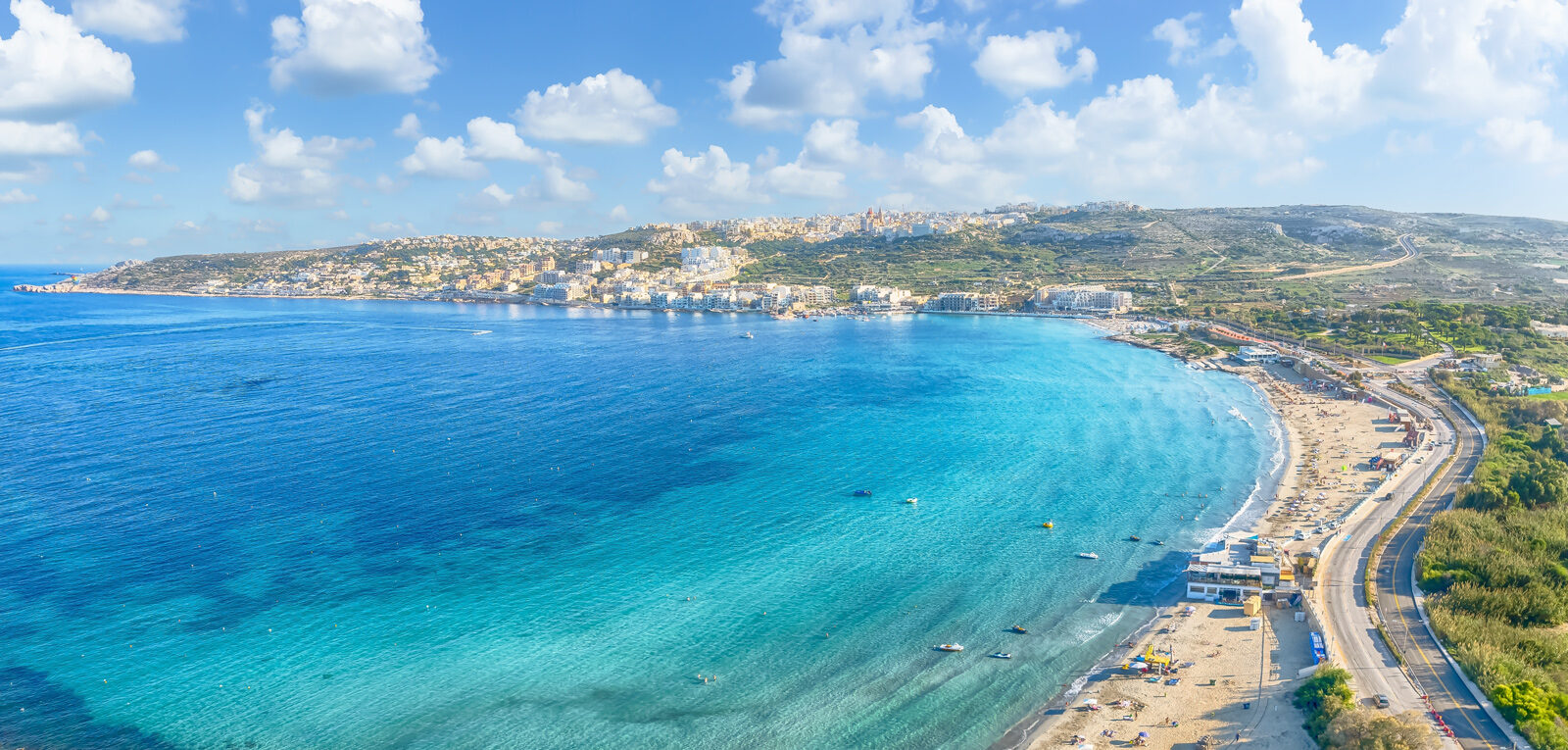Malta exercises a prudential fiscal policy, with low budget deficits and even surpluses characterising the last decade of rapid economic development. During this period, the country has seen its GDP more than double to €19.4 billion as at the end of 2022, continually outperforming the European Union and Eurozone averages since 2007.
Macroeconomic Indicators

Real GDP growth rate by volume
Source: 2012-2021 Eurostat, 2022-25 European Commission
Government debt stands at around 45.3 per cent of GDP (as at the end of 2024), and is largely domestic, with over 80 per cent held by local institutions and the Maltese investing public.
General Government Debt
Source: National Statistics Office, Central Bank of Malta
This solid fiscal context allowed for timely state intervention to mitigate the global inflationary pressures on food and energy prices felt throughout 2022 and 2023, resulting in the lowest inflation rate in Europe.
Malta’s highly liquid banks also managed to maintain their long-term rates, providing enhanced stability for thousands of businesses, economic operators and investors in Malta. Consequently, local banks continued to offer stable and competitive interest rates on commercial and business loans, allowing the economy to weather the storm.
Meanwhile, unemployment is the lowest in the EU, while the proportion of employed individuals has continued to rise as female participation in the workforce has increased.
These favourable macroeconomic conditions have also been recognised through consistently positive credit ratings certifying Malta as a safe yet competitive jurisdiction for investment.

Rating: A2 - Stable
November 2024

Rating: A+ - Stable
September 2024

Rating: A- - Stable
December 2024

Rating: A(high) - Stable
October 2024
International economic and social assessments also position the country among the top global performers. The United Nations Human Development Index puts Malta in the highest category, while the Social Progress Index, which determines how countries provide basic human needs, wellbeing, and opportunity for their citizens, lists Malta as a Tier 2 country, indicating a high level of social progress, a ranking shared with highly developed countries like the US, the UK, France, Austria, and Singapore.
Investment Position
A net creditor in the global economy, Malta holds €269 billion in foreign assets as compared to €261 billion in foreign liabilities. The overwhelming majority of foreign investment in Malta is direct, at 83.2 per cent of the total, and includes activity by global players in both traditional sectors like high value-added manufacturing as well as in others which have developed more recently, like aviation.
Broadly speaking, Malta is a net importer of goods and a net exporter of services. Its top material exports include petroleum products, pharmaceuticals, electronics, and fish, while its main services exports are related to the tourism and travel, remote gaming, financial services, and professional and technical consulting sectors.
Related Content
Where To Start Economic Overview Trade Political & Legal Frameworks History Of Malta Quick FAQs















